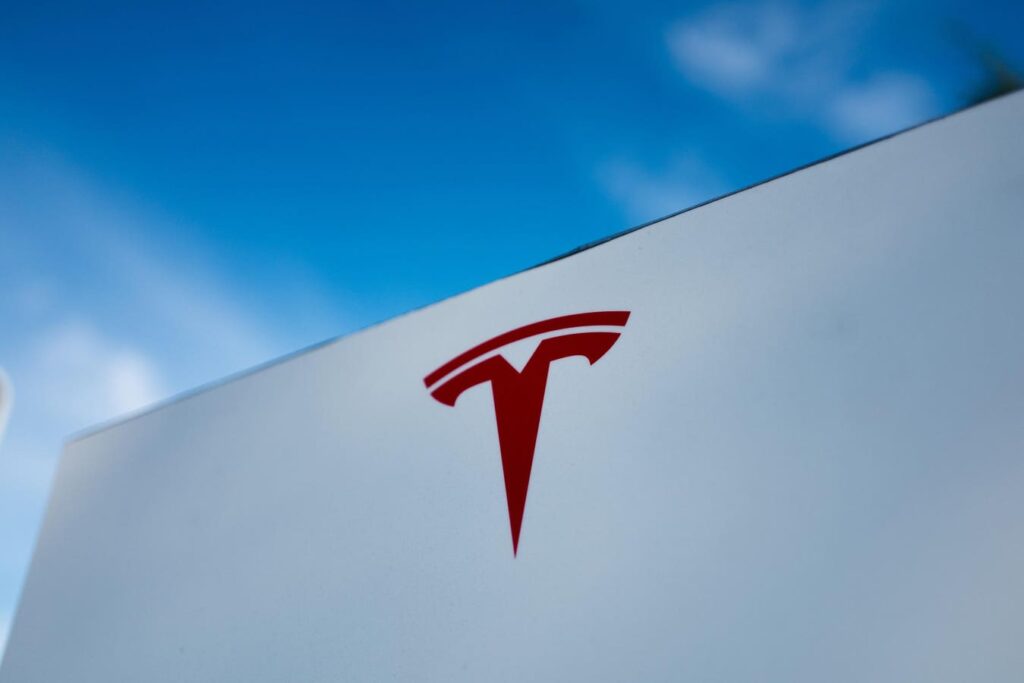Tesla Inc. (NASDAQ: TSLA) dropped 14% in a single day yesterday, representing one of its most significant one-day falls in the past few years. The stock currently trades at around $285, significantly down from peaks exceeding $350 in 2024 — resulting in a loss of over $150 billion in market capitalization. This abrupt decline has reignited discussions among investors: Is this merely a temporary setback, or could Tesla’s stock drop even further — potentially all the way down to $150?
What’s Causing the Decline?
Despite the sell-off, Tesla’s valuation remains high. Its price-to-earnings (P/E) ratio is approximately 156x, with a price-to-sales (P/S) ratio of 9.3x — metrics usually associated with rapidly growing software companies, not capital-heavy automakers. Nevertheless, its fundamentals are beginning to show weaknesses.
In the past 12 months (as of April 2025), Tesla’s revenue increased by only 1% year-over-year, while net margins declined from 7.3% to 6.7%. This tepid top-line growth, combined with shrinking profitability, already indicated underlying pressure. However, the significant hit came with its Q1 FY2025 earnings: revenue decreased by 9%, and net margins fell to barely 2%. This marks a considerable decline, indicating stress not only on sales volume but also on pricing and cost management.
Some of this pressure is political. Elon Musk’s recent public disagreement with former President Donald Trump has introduced uncertainty regarding Tesla’s future access to government contracts and subsidies. Trump has implied that a future administration might revoke federal support for both Tesla and SpaceX — a warning that unsettled markets and added a new layer of risk.
Tesla’s brand reputation is also facing challenges. Once celebrated as a beacon of sustainable innovation, it is becoming increasingly politicized. Calls for consumer boycotts and sporadic protest actions — including vandalism at charging stations — are raising alarms about potential demand decline, particularly in the U.S.
Furthermore, there is the issue of competition. Chinese EV manufacturers like BYD and NIO are persistently saturating global markets with attractive electric vehicles at lower price points. Tesla has responded with price reductions, but these have squeezed margins and done little to stop the erosion of market share abroad. Consequently, Tesla is experiencing a margin squeeze while contending with stagnant or negative growth.
What Could the Consequences Be?
Let’s consider a plausible downside scenario.
If Tesla’s revenue decreases by an additional 10-15% over the next two years — influenced by increasing competition, political challenges, and reduced pricing power — annual revenue could drop to approximately $82–86 billion. If annual net margins shrink further, for instance to 4%, EPS could fall below $1.00.
At that stage, Tesla would probably lose its tech-growth premium. A re-evaluation towards 25–30x earnings would not be unexpected. With EPS at $1.00 and a 30x multiple, Tesla might be priced at $30. Allow that to sink in for a moment.
Even a less serious scenario — $1.50 in EPS at a 50x multiple — suggests a share price near $75. While this is not as drastic as the potential stock price of $30, it cannot be ignored that the stock falling to $75 seems quite believable. In such a case, a decline to $150 is a very real possibility, especially if the upcoming quarters continue to underperform.
What Might Stimulate a Recovery?
Despite the increasing risks, Tesla is far from being out of the race. It still leads the global EV market, possesses its charging network, and excels in autonomy and energy solutions. Product expansion — which includes the Cybertruck, monetization of Full Self-Driving (FSD), and the energy storage division — could stabilize revenues and diversify sources of profit.
In a more stable context, where revenue achieves modest growth of 5–8% yearly and net margins recover to 6–8%, earnings could bounce back to $4–5/share. Even at a reduced 40–50x multiple, this would suggest a valuation of $200–250, which would still represent a 10% decline from the current value.
An optimistic recovery scenario could entail favorable macroeconomic conditions: lower interest rates, supportive policies, or a resurgence of investor enthusiasm for clean technology. Should earnings rise to $6–7/share and the P/E ratio expand to 60x, Tesla could once more approach $400+.
Final Thoughts
At $285, Tesla’s valuation still reflects significant growth expectations — despite cautionary signals in the most recent earnings report. A P/E of 156x with only 1% revenue growth and declining margins is a precarious situation. The 9% revenue decline and margin drop in Q1 FY2025 highlight the increasing risk of a sudden earnings decline. If those trends continue, a drop toward $150 is not simply likely — it is arguably justified.
That being said, Tesla continues to be a frontrunner with long-term potential and dedicated shareholders. If it can navigate short-term volatility, restore margins, and revitalize its product strategy, the upside potential remains a valid consideration. For the time being, however, the risk-reward balance appears increasingly uncertain.
Investing in a single stock like TSLA can be risky. On the other hand, the Trefis High Quality (HQ) Portfolio, which includes 30 stocks, has consistently outperformed the S&P 500 comfortably over the last four years. What’s the reason for that? As a whole, HQ Portfolio stocks have yielded higher returns with lower risk compared to the benchmark index, providing a less turbulent experience, as evidenced by HQ Portfolio performance metrics.
Read the full article here

